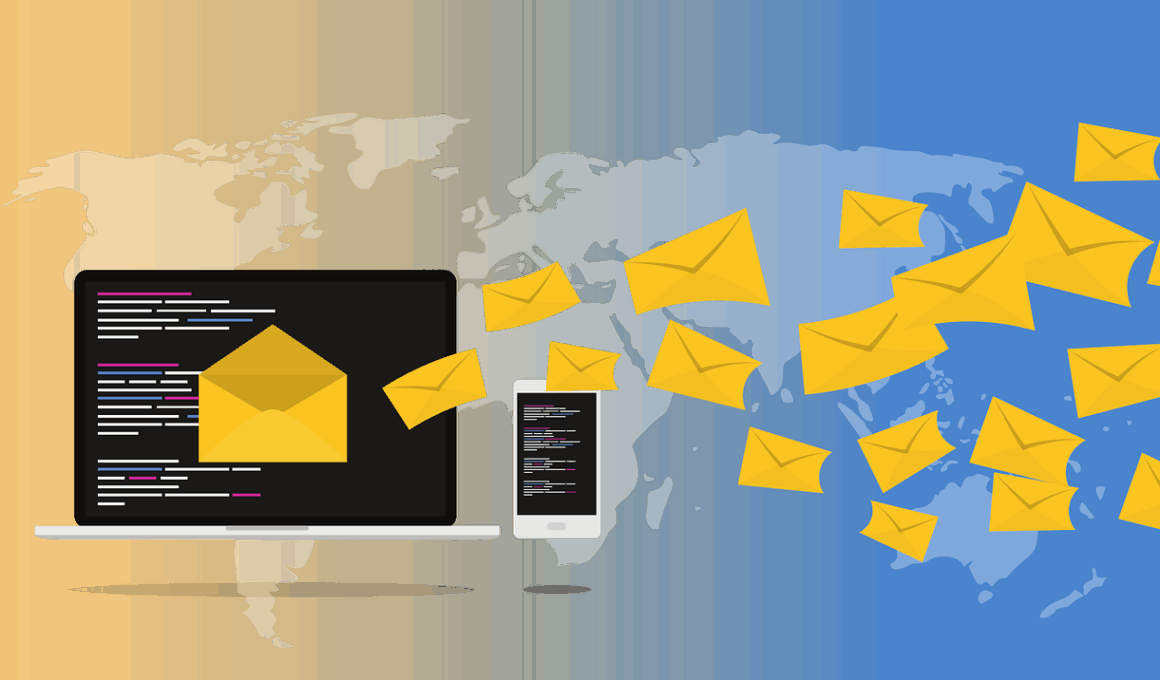Analyzing Email Marketing Metrics to Boost Event Attendance
Email marketing continues to play a crucial role in the success of event marketing strategies. Understanding key metrics ensures that businesses can optimize their campaigns for increased event attendance. Essential metrics to focus on include open rates, click-through rates, conversion rates, and unsubscribe rates. Analyzing open rates indicates how effectively your subject lines capture the audience’s attention. A high open rate suggests your email is reaching the right people, while a low rate could imply the need for a more engaging subject line or targeted audience. Click-through rates offer insight into audience engagement after the email has been opened. It shows how many recipients clicked on links within the email, guiding you to determine content effectiveness. Conversion rates measure how many of those clicks led to registrations or ticket purchases. Additionally, consider unsubscribe rates to gauge audience satisfaction and retention. These metrics form the backbone of any successful email marketing campaign, providing valuable insights to enhance future efforts and maximize attendance at events. By focusing on these metrics, marketers can significantly boost their event success through insightful data-driven decisions.
Researching audience demographics can vastly improve your email marketing campaigns, which, in turn, enhances event attendance. Knowing your audience’s preferences allows you to tailor your emails effectively. Different demographics respond uniquely to various content types, such as visuals, personalized invitations, or event highlights. Segmenting your email list based on factors like age, location, and industry helps deliver more relevant content that resonates with recipients. Furthermore, understanding your audience’s preferred communication times can increase engagement levels and boost open rates. A/B testing different sending times and email designs can provide insights into what works best for your particular audience. Tools like Google Analytics and email marketing platforms can offer useful data on user behavior and preferences. Additionally, consider incorporating feedback loops, like surveys, to gather direct insights on what encourages attendees to register for events. This qualitative data, combined with quantitative metrics, helps refine your approach, ultimately increasing the effectiveness of your email campaigns. The goal should always be to create meaningful connections, leading to higher engagement rates and increased attendance at events through informed and strategic email marketing efforts.
Utilizing A/B Testing for Enhanced Metrics
A/B testing, or split testing, is an invaluable method for refining email marketing strategies aimed at boosting event attendance. This technique involves sending two variations of an email to different segments of your audience to determine which performs better. Factors to test include subject lines, email layouts, call-to-action (CTA) placements, and imagery. By analyzing which version yields higher open rates or click-through rates, marketers can identify successful elements. For example, A/B testing subject lines can reveal whether a more direct approach or a creative one resonates better with your audience. Similarly, experimenting with CTA button colors, sizes, or phrasing can significantly influence engagement. Track performance using metrics such as conversion rates, as these will indicate overall effectiveness in driving attendance. Continuously refining these elements through testing ensures campaigns remain effective and relevant. A/B testing not only aids in metric enhancement but also fosters a culture of continuous improvement within your marketing team. Emphasizing data-driven decisions leads to more impactful email marketing strategies, significantly boosting event attendance and achieving marketing goals.
Content personalization is a fundamental aspect of effective email marketing, particularly in enhancing event attendance. By tailoring emails to individual preferences, businesses can foster a stronger connection with their audience. Implementing dynamic content based on previous interactions, registrations, and interests can provide a more engaging experience. For instance, utilizing first names in emails can create a personalized feel, encouraging recipients to partake in the event. Moreover, suggesting events based on past participation can offer relevant options that pique interest. This personalized touch not only drives immediate engagement but also builds long-term relationships with attendees. Additionally, consider integrating personalized recommendations for sessions, speakers, or workshops relevant to their interests within the event. Attendees are likelier to confirm their participation when they see content that reflects their preferences. Collecting data from previous events and interactions provides a foundation for crafting these tailored messages. As a result, personalized emails can significantly improve open and click-through rates, ultimately leading to increased attendance. Striving for personalization not only boosts attendance but also enhances the overall attendee experience, making them feel valued and recognized.
Monitoring Engagement Post-Event
The metrics don’t stop accumulating after your event has concluded; post-event engagement measurement is equally vital. Evaluating attendee satisfaction through post-event surveys provides insights into what worked well and what needs improvement. These surveys can capture attendees’ impressions of the event, from content quality to networking opportunities. Analyzing feedback can uncover trends and themes that emerge, offering actionable insights for future planning. Additionally, assess how well attendees engaged with event content during the event. Metrics such as session participation, materials downloads, or app interactions can provide clarity on what aspects resonated the most. Other metrics to analyze include email follow-ups and thank-you notes sent post-event; monitoring engagement levels can reveal attendees’ ongoing interest. A successful follow-up strategy keeps attendees informed and engaged with future events or initiatives. Engaging attendees after the event not only strengthens relationships but can also serve as a platform for feedback collection, enhancing future events. The post-event phase is as crucial as pre-event marketing efforts to ensure continuous improvement and foster ongoing engagement with your audience, paving the way for future successes.
Leveraging social media analytics can provide additional insights into enhancing email marketing metrics. Social media platforms are valuable for gauging audience interests and trends that can inform your email campaigns. By monitoring engagement metrics such as likes, shares, and comments, marketers can understand what content resonates with the audience. Integrating social media efforts with email marketing creates a cohesive strategy that amplifies reach and enhances attendance. For instance, sharing event-related content across social platforms can drive traffic to your registration page, covered in your email campaigns. Additionally, consider using social listening tools to analyze conversations around your event topics or competitors, providing better context for your messaging. This data can be used to craft emails that address trending topics or audience concerns, improving relevance in your messaging. The combined insights from both social media and email marketing can lead to innovative ideas for future campaigns. Ultimately, leveraging the rich insights from social analytics can help refine email strategies that boost event attendance, building a well-rounded approach that caters to a wider audience. Transitioning from insight to action ensures ongoing optimization in your event marketing efforts.
Final Thoughts on Email Marketing Metrics
Understanding and analyzing email marketing metrics is essential for event organizers aiming to boost attendance effectively. The process involves continuously evaluating a wide array of metrics, including open rates, click-through rates, conversion rates, and post-event feedback. A commitment to utilizing analytics informs strategic planning, allowing marketers to optimize campaigns based on what resonates with their audience. Add A/B testing to refine elements like subject lines and CTAs, pushing for greater engagement. Personalization stands out as one of the most impactful strategies in improving email performance, forming a relevant connection with recipients. Post-event engagement monitoring ensures feedback-driven improvements, fostering continuous development in marketing strategies. Leveraging social media insights adds another layer to enriching email outreach, creating a more comprehensive strategy. The insights gained propel future campaigns, subsequently improving attendance in subsequent events. Ultimately, fostering a data-driven culture in your marketing strategy is vital, enabling marketers to adapt swiftly and enhance overall performance. By prioritizing analytical approaches, marketers can significantly boost event attendance through intentional, informed, and effective email marketing strategies that resonate with their audience.


